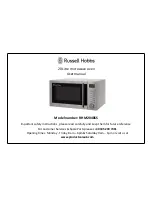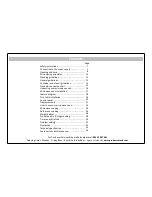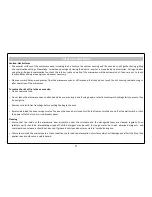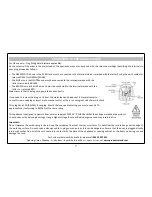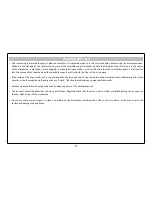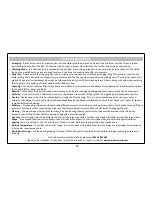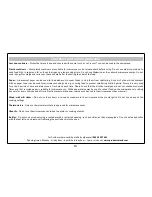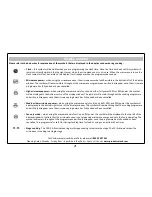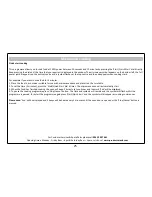
Microwaving principles
Microwaves are high-frequency electromagnetic waves similar to radio waves. While radio waves may vary in length from one metre to many
kilometres, microwaves are very short (about 4cm). Inside the microwave oven is the magnetron, which converts the electrical energy into
microwaves. The microwaves are reflected off the metal walls and the metal door screen and bounce around inside the oven cavity. Then
they pass through the cooking container as microwaves are transmitted by glass, china, pottery, microwaveble plastics and paper.
Microwaves do not make any heat themselves but only cause water molecules in food to vibrate. This vibration causes friction i.e. heat which
cooks the food. Microwaves are also attracted to fat and sugar particles so foods which contain higher levels of these will cook quicker.
Microwaves can only penetrate food about 4-5cm (1½-2 inches) so food thicker than 8-10cm is cooked as the heat spreads through the food
by conduction to the centre. So just like convectional cooking in a traditional oven the food cooks from the outside inwards.
Microwaves cannot pass through metal, so the inside of the oven is lined with metal. The door is lined with a fine metal mesh which stops
microwaves getting through. This means that when the microwave oven door is shut, there is no possibility that microwaves can be released.
This is why the microwave oven has been made so that it will not work when the door is open. The doors and hinges are fitted with locks,
seals and cut-out switches which automatically turn off the microwaves as soon as the door is opened. The microwaves do not stay in the air
or in the food when you open the microwave oven door. The food will continue to cook after the microwave is switched off, this is by heat
conduction and not through continued release or residual microwave energy being present (please refer to Standing time on page 11).
IMPORTANT:
Microwaves cannot pass through metal, so metal cookware and utensils can never be used in a microwave when cooking on
microwave only setting.
Unsuitable foods for microwave cooking
Do not attempt to cook foods that require dry external heat to cook effectively on the microwave only settings. Such foods in this category
are soufflés, double crust pastry pies, yorkshire puddings etc.
A microwave oven is not suitable for foods that need to be deep fat fried.
Do not boil eggs in their shells in a microwave oven as they can explode and cause injury.
10
For Customer Services & Spare Parts please call
0345 209 7461
Opening times: Monday - Friday 8am – 6pm & Saturday 9am – 1pm or visit us at
www.productcareuk.com

